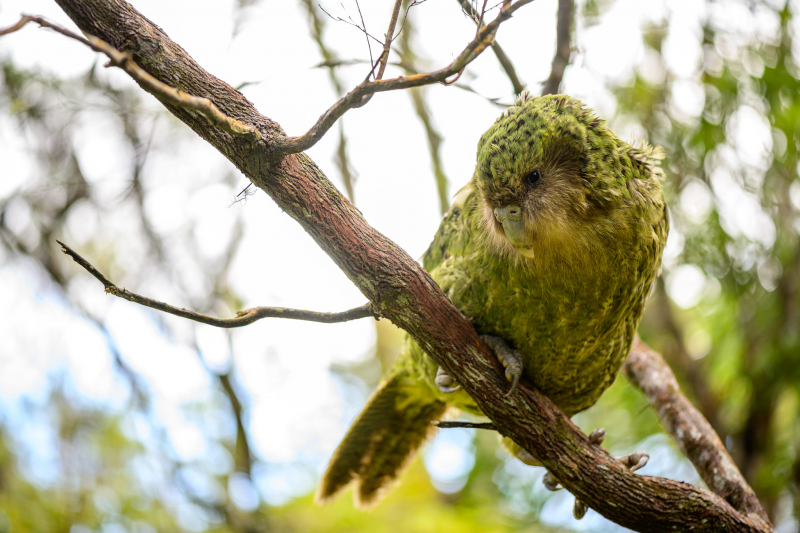Kakapo
The Kakapo (Strigops habroptilus), also known as the night parrot or owl parrot, holds a unique place in the avian world as one of the rarest and most endangered parrot species. Endemic to New Zealand, the Kakapo boasts distinctive characteristics, captivating bird enthusiasts with its nocturnal habits, quirky behaviors, and remarkable adaptability to the island's unique ecosystems.
The Kakapo is a large, nocturnal parrot with moss-green plumage that provides effective camouflage in the dense vegetation of its native habitat. Its owl-like facial disc, relatively short wings, and strong legs contribute to its unique appearance. Males are distinguished by a booming, resonant call, which they use during the breeding season to attract potential mates.
Unlike most parrots, the Kakapo is primarily nocturnal, exhibiting behaviors adapted to low-light conditions. It is well-suited for a secretive, ground-dwelling existence, making use of its strong legs for walking and climbing. The Kakapo's nocturnal habits evolved as an adaptation to the absence of mammalian predators in New Zealand before human settlement.
Historically, Kakapos were distributed throughout New Zealand's forests, but their numbers dwindled due to habitat loss, predation by introduced mammals, and hunting. Today, conservation efforts focus on a few offshore predator-free islands where Kakapo populations are carefully managed to ensure their survival.
The Kakapo has a distinctive reproductive strategy, characterized by irregular breeding cycles known as "boom and bust" periods. These cycles occur in response to environmental conditions and the availability of specific native plants, particularly the rimu tree. During a "boom" year, when these plants produce abundant fruit, Kakapo populations may experience increased breeding.
















